The Die is Cast
HAFB announced that by the end of 1961 the student load would be cut from 1,000 to 600; to 400 by 3/31/62; and navigation training would end by June l962. In the following three months the Base strength would decline to 200, and by the end of 1962 only 30 civilians would be on the Base manned by 60 airmen and eight officers. Eventually the Base’s reduced mission would be absorbed by James Connally AFB in Waco.
Campaign to Keep Base Open
Although the U. S. by May l961 was pledging increased aid to Vietnam, Defense Agency spokesman Clyde Bothiner of the U. S. Department of Commerce reiterated that there was no military use for HAFB. Locals tried to reverse the decision with 5,000 letters to Senators, Representatives, the President and Vice President.
Early 1962 Base Slowdown
By March 1962 base headcount had declined so much the dining halls were consolidated and the hospital became a dispensary.
In April the gym, library, and clothing sales store were closed. By then it wasn’t handwriting on the wall. It was spray paint!
Worst HAFB Tragedy
While these activities to save HAFB were going on, the base suffered its greatest tragedy ever. A T-29 with a crew of five and four spotters left the base on a search and recover mission into Mexico after a small Cessna plane flown by an American was reported missing. Five more
T-29s and four planes from Corpus Christi joined the effort.
At a press conference the next day the solemn base commander reported the original T-29 had crashed into a mountain in remote central Mexico near Arroyo Seco in the state of Queretaro, killing all nine aboard. The plane apparently had lost engine power and the pilot fell 100 yards short of a 600’ mesa atop a mountain after clipping some treetops.
Ironically the pilot of the missing plane survived after his plane was impounded by Mexican authorities and he was arrested for suspected drug smuggling. He escaped and returned home to Donna without notifying U.S. authorities.
Economic Impact
The base closing had an immediate, severe economic impact on Harlingen.
Local spending cratered, from $25 million in 1961 to about
$15 million in 1962.
HCISD Chairman Frank Boggus noted that l,237 children of HAFB staff and employees attended Harlingen schools,
$4 million had been spent for new schools, and taxes had increased 20% to cover this cost.
Van Snell of the Harlingen Housing Authority told the task force most of the 208 Lemoyne Gardens units were filled with Base personnel.
Harlingen’s Last Ditch Hopes
In late August 1961 there was a rumor the base would become a NASA space laboratory, but it ended up in Pasadena. Texas. Another rumor was that HAFB would become an Officers Candidate School, but nothing developed.
Cameron County Democratic Party Chairman Jack Skaggs was appointed to head up a Board to “enable it to establish and carry out a coordinated program for securing and insuring the continued use of the HAFB for military purposes and to advise and recommend to the Mayor and City Commissioners as to such action which may be expedient in effecting such purpose.”
Skaggs and City Manager Marshall Bingham even made a futile trip to Washington, D.C., hoping to change the Department of Defense’s decision. Talk about being in denial!
Accepting Reality
Other Harlingen leaders were more realistic, and urged the Chamber of Commerce to find non-military uses for the Base. The Valley Baptist Hospital and the Seventh Day Adventist Church considered utilizing the Base hospital, but both backed away when their inspections revealed half the beds and considerable equipment had been shipped out.
Investment banker Fred Flynn suggested the city publicize itself as a tourist center while pushing for a bridge across the Rio Grande in the vicinity of Los Indios to get more business from Mexico. This seemed like a good idea, but nothing was done.
Harlingen in the 1960s
The decade of the 1960s was a disaster for Harlingen, following the 1950s boom. Despite optimistic cheerleading from Harlingen mayors and civic leaders that the city would bounce back quickly, it didn’t.
Harlingen’s population had increased from 23,000 in 1950 to 41,000 in 1960, but dropped to 34,000 in 1962.
The housing market was particularly hard hit, with vacant houses and foreclosures all over Harlingen. The ‘fire sale’ of 1,400 homes in 1963 depressed the local housing market for years. Many retailers closed shop; schools lost state funding; and Hurricane Beulah in 1967 added to the city’s woes.
Early 60s Efforts Fail
It took years to fill the HAFB footprint after several ‘false starts’.
In July 1962 Navion Aircraft announced it was merging its Galveston and Phoenix operations in Harlingen, to make 25 single engine Rangemasters a month in five hangers with 250 employees. The deal died when the company ran into financial trouble. Navion made only
4 to 5 planes per year the next decade, and did not move to Harlingen.
In December 1962 Senator Yarborough announced that a major helicopter company was seriously considering Harlingen, but nothing happened.
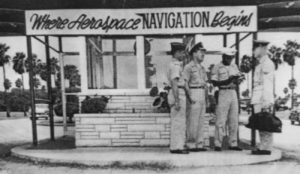
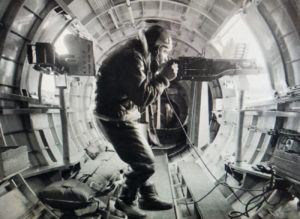
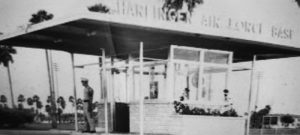
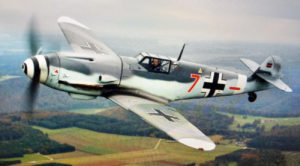
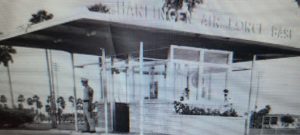
Recovery Begins in Mid-60s
The first Marine Military Academy classes began in September 1965, and MMA grew to 400 students.
In 1967 TSTC started as a much smaller version of the Waco campus, and has become huge.
In 1968 the Confederate Air Force (CAF) moved from Mercedes to occupy ‘Rebel Field’. The CAF moved to Midland in 1991.
Recovery Accelerates in 70s
In 1970 the airport became Valley International Airport (“VIA”), and Harvey Richards Field closed three years after Trans-Texas Douglas
DC-9 flights transferred to the new commercial airport.
In 1971 Spartan Aviation leased several hangars and hired 500 to overhaul airplane engines
In 1972 Rio Grande State Center took over the base hospital to treat alcohol and drug addiction. EMAIR took over several hangars to build huge crop dusters.
In 1975 Southwest Airlines made VIA its fourth terminal, after Dallas, Houston, and San Antonio. Southwest has been VIA’s anchor airline ever since.
Final Thoughts
The 14 years HAAF and HAFB were open qualify as the crown jewel in Harlingen history. There was a mutual pride and joy about the base between townspeople and the military. Harlingen residents were proud to help the war effort in World War 2, the Korean War, and the Cold War. The booming local economy was icing on the cake. Though pleased to see WW2 and the Korean War end, locals were sad to see the base close each time.
The spirit of Harlingen — its leaders and the general public — finally prevailed when Valley International Airport, TSTC, the Marine Military Academy and others filled the HAFB space. They made Harlingen a much more vibrant city.
“Where there’s a will … … there’s a way!”




